Penschilderij. For those of you who read my recent blog post on the wash drawing by the Willem Van de Veldes (https://www.marinersmuseum.org/2020/04/wanted-one-fae-who-knows-dutch/) you might remember my mention of the elder’s specialized art form of ‘penschilderij’ or ‘pen painting.’ While it’s not by Van de Velde we are lucky enough to have a beautiful little pen painting by Adriaen Cornelisz Salm (he also went by Van Salm and Van der Salm), in the collection.
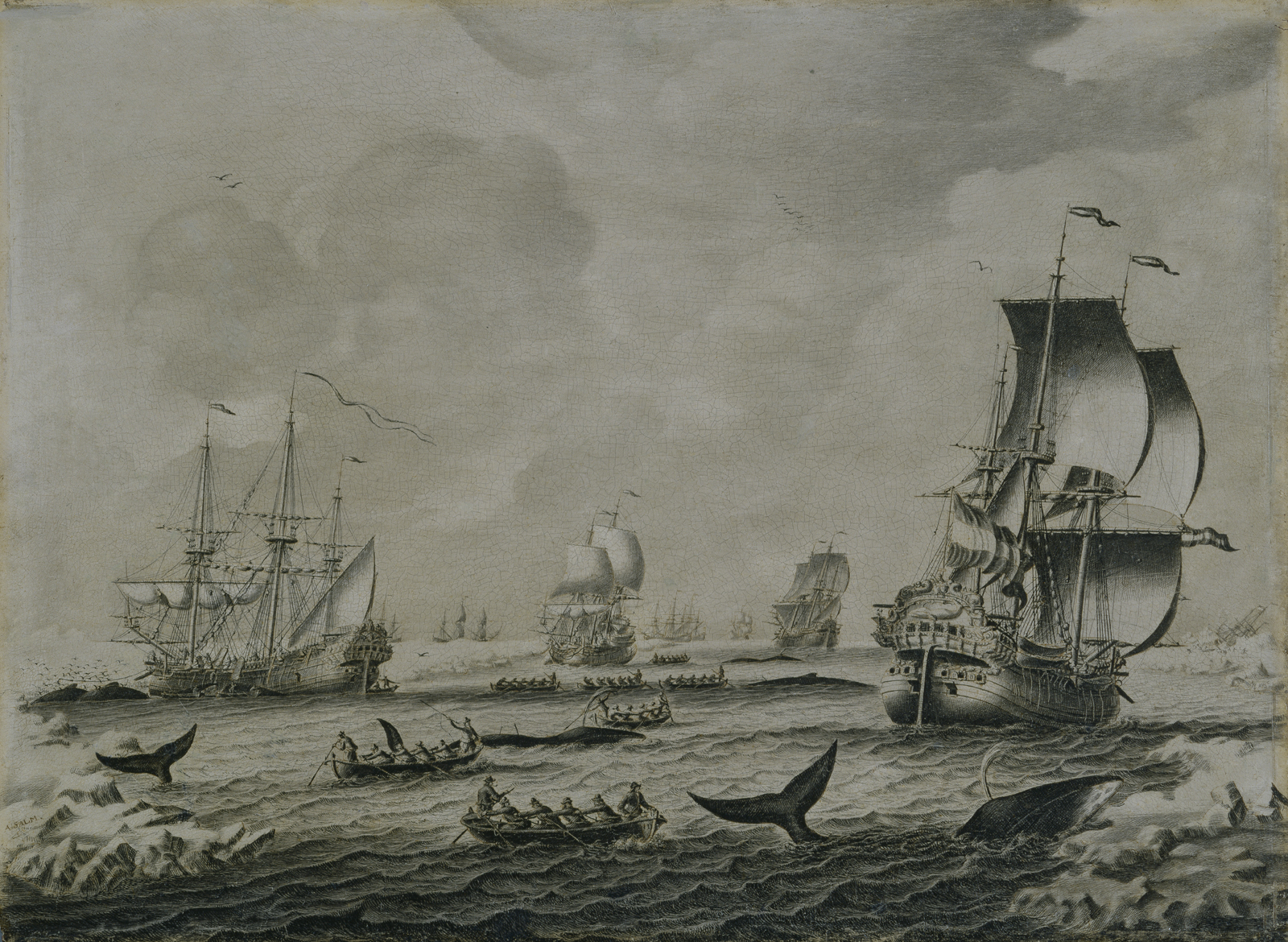
The medium of penschilderij was developed in the late 16th or early 17th century. It was born from the efforts of Dutch engraver, publisher and artist Hendrick Goltzius who began drawing with a pen on paper or vellum in order to simulate the characteristics of an engraving. By the early 17th century Goltzius included drawing on a canvas primed with paint–the forerunner of the pen painting–in his oeuvre. In his time Goltzius was quite famous so Van de Velde was probably familiar with his artwork and prints. However, Goltzius only produced three pen paintings during his life so it seems unlikely that Van de Velde was familiar with the medium Goltzius was employing. Consequently, experts like Rijksmuseum curator Friso Lammertse credit Van de Velde as the “true founding father” of the penschilderij.
Willem Van de Velde the Elder considered himself first and foremost, a ship’s draughtsman, so drawing, not painting, was his preferred medium. Like Goltzius, Van de Velde worked his way through different types of supports before settling on the penschilderij–a medium that was perfectly suited to drawing sailing ships and their rigging. So perfect, the medium was exclusively employed by maritime artists starting with Van de Velde who was the undeniable master of the genre.
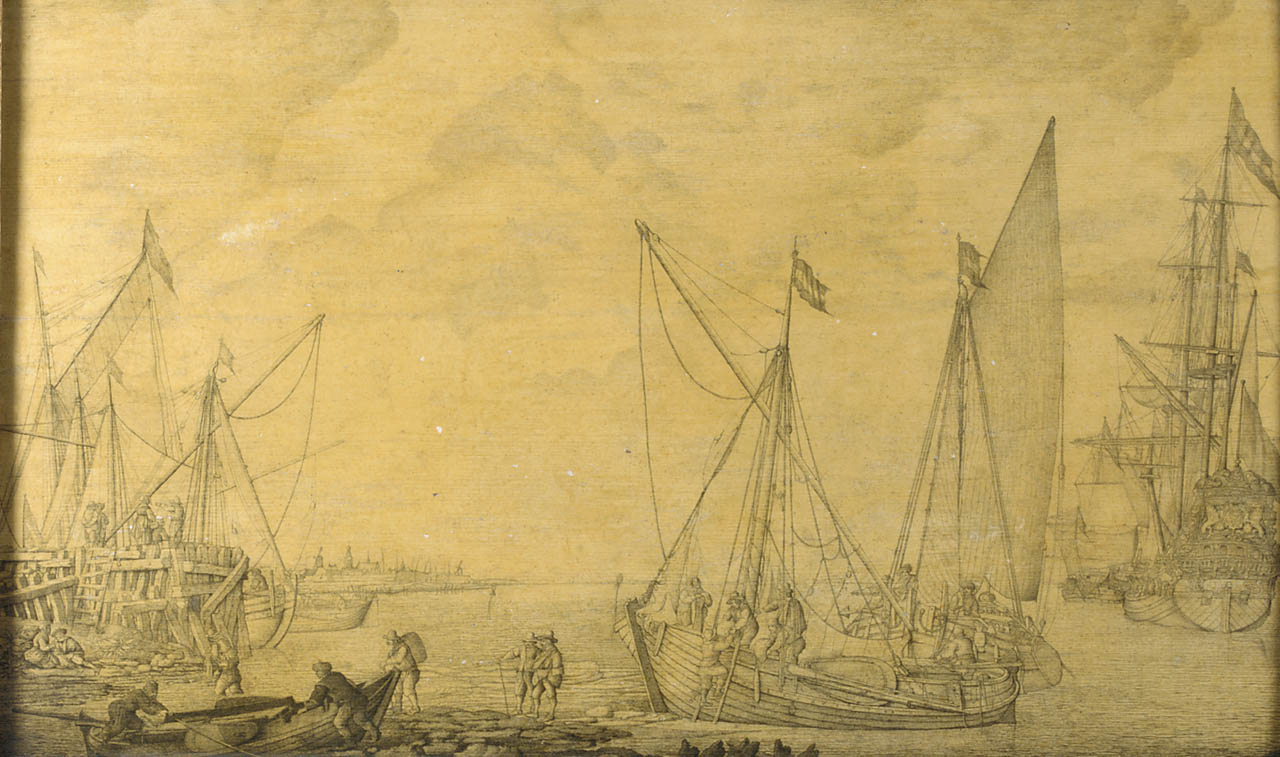
Looking at the painting above it’s pretty obvious that Van de Velde was already highly skilled when this work was produced. Like others, his first “formal” works, in other words artworks he considered a finished salable product, were drawings on paper. I think it’s important to say that I’m not including the fast sketches he made while fulfilling his role as “combat artist” or the other preparatory drawings he made among his “formal” works. Paper would always have been his “go to” medium, but it does have a problem when it comes to permanence. Van de Velde’s desire to give his completed artworks longer life is what eventually led him to the penschilderij.
Van de Velde started his quest for longevity with vellum but like paper, this material comes with its own set of problems. Vellum was fairly expensive and while it was available in larger sizes the larger the sheet the more likely it was to have surface irregularities, something that would have been incompatible with Van de Velde’s delicate drawing technique. Like paper, vellum is susceptible to humidity which causes it to ripple and distort–a quality Van de Velde would definitely not have been happy with.
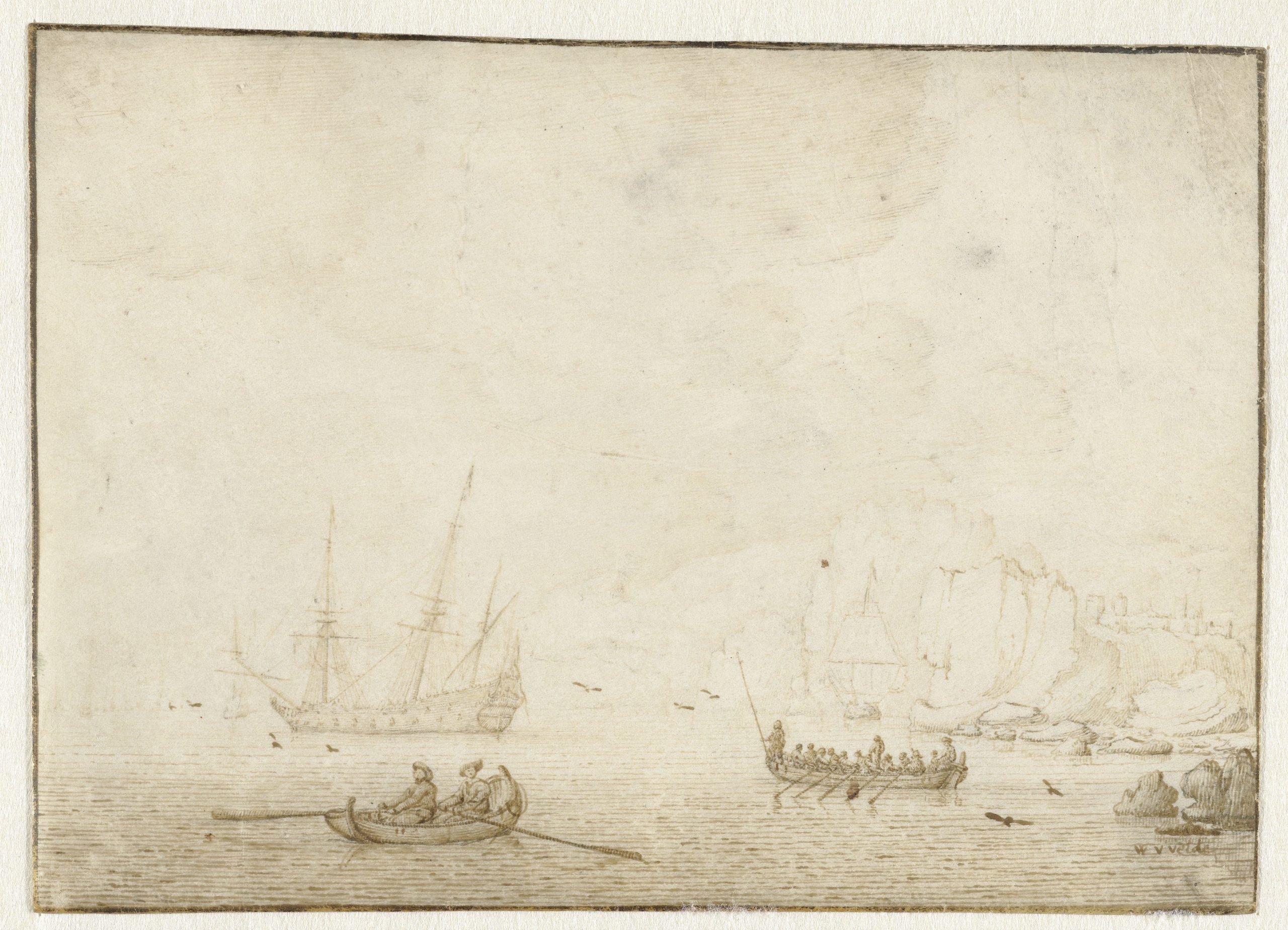
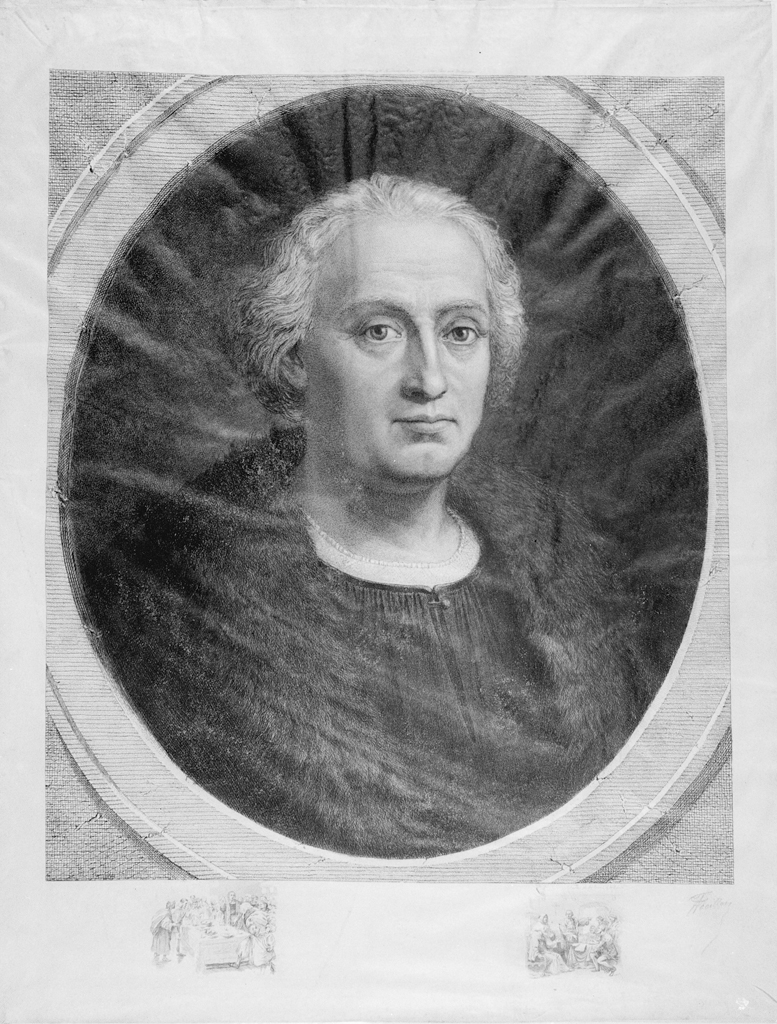
Unhappy with the limits presented by paper and vellum Van de Velde turned his attention to wood. Wooden panels provided greater potential when it came to size and shape but it also meant a new method for drawing on the support had to be developed. To create a drawing surface that resembled paper or vellum Van de Velde applied a layer of brown paint topped with two layers of white (a mixture of lead white, chalk and oil) to the surface of the board. According to Van de Velde associate Pieter Blaue the prepared surface had to dry for two or three months before it was hard enough “to take a drawing done with a sharp pen.”
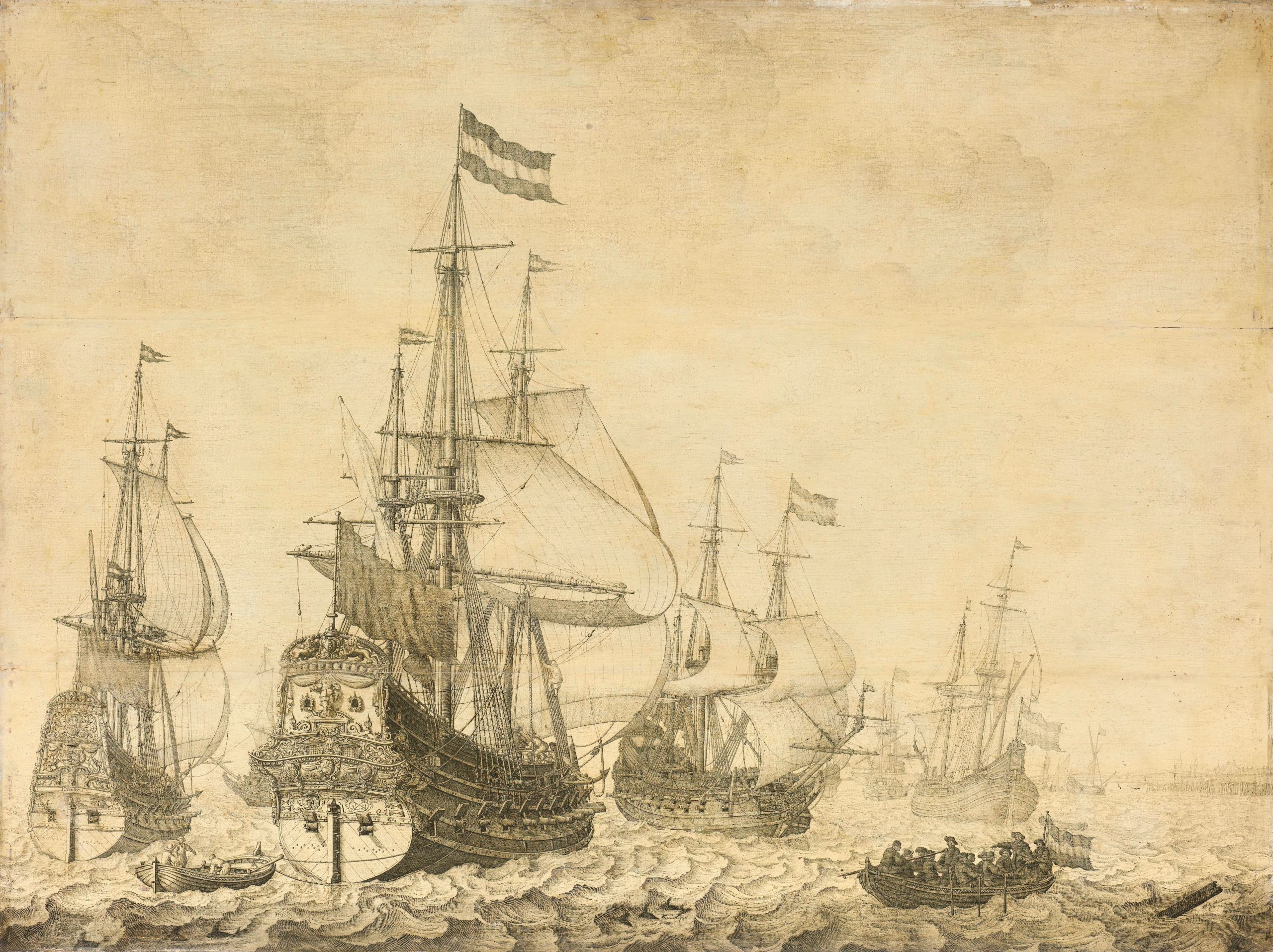
Once the ground layer was dry Van de Velde drew a detailed draft of the scene with graphite. This pencil draft probably helped eliminate or reduce mistakes made with the pen. Erasing mistakes was difficult because they had to be scraped away with a sharp knife. The under drawing also made tracking the progress on the composition much easier. After applying the graphite under-drawing Van de Velde used a brush to apply thin washes of paint to certain areas in order to add depth or increase the contrast between dark and light. The drawing was applied with a reed pen containing ink made of animal glue and lampblack. Like an engraving, the scene was created from an extraordinarily fine series of adjacent and parallel lines of varying thickness and changing directions, crosshatches and dots.


Like an oil painting, the finished drawing was covered with a layer of varnish. According to a 1651 letter by art broker Michel Le Blon the finished product was strong enough that the artwork could be “exposed to rain and wind or washed down with a sponge” without causing damage (can you feel our conservators cringing right now?).
Van de Velde may have worked on wooden panels for several years before moving to canvas, mainly because of the advantages it had over board: it was cheaper, it could be rolled, and it was available in any size Van de Velde wanted. In a 1652 letter to Swedish general and admiral Carl Gustav Wrangle Van de Velde envisioned creating a pen painting 20 to 25 feet long! While we’ve all seen paintings this size or larger a twenty-five foot long penschilderij would have been astounding. Considering that it took Van de Velde four months of constant work (ground drying time not included!) to draw the one meter square The Capture of the Royal Prince during the Four Day’s Battle it would have taken about two years of constant work to draw a 25 foot long pen painting.
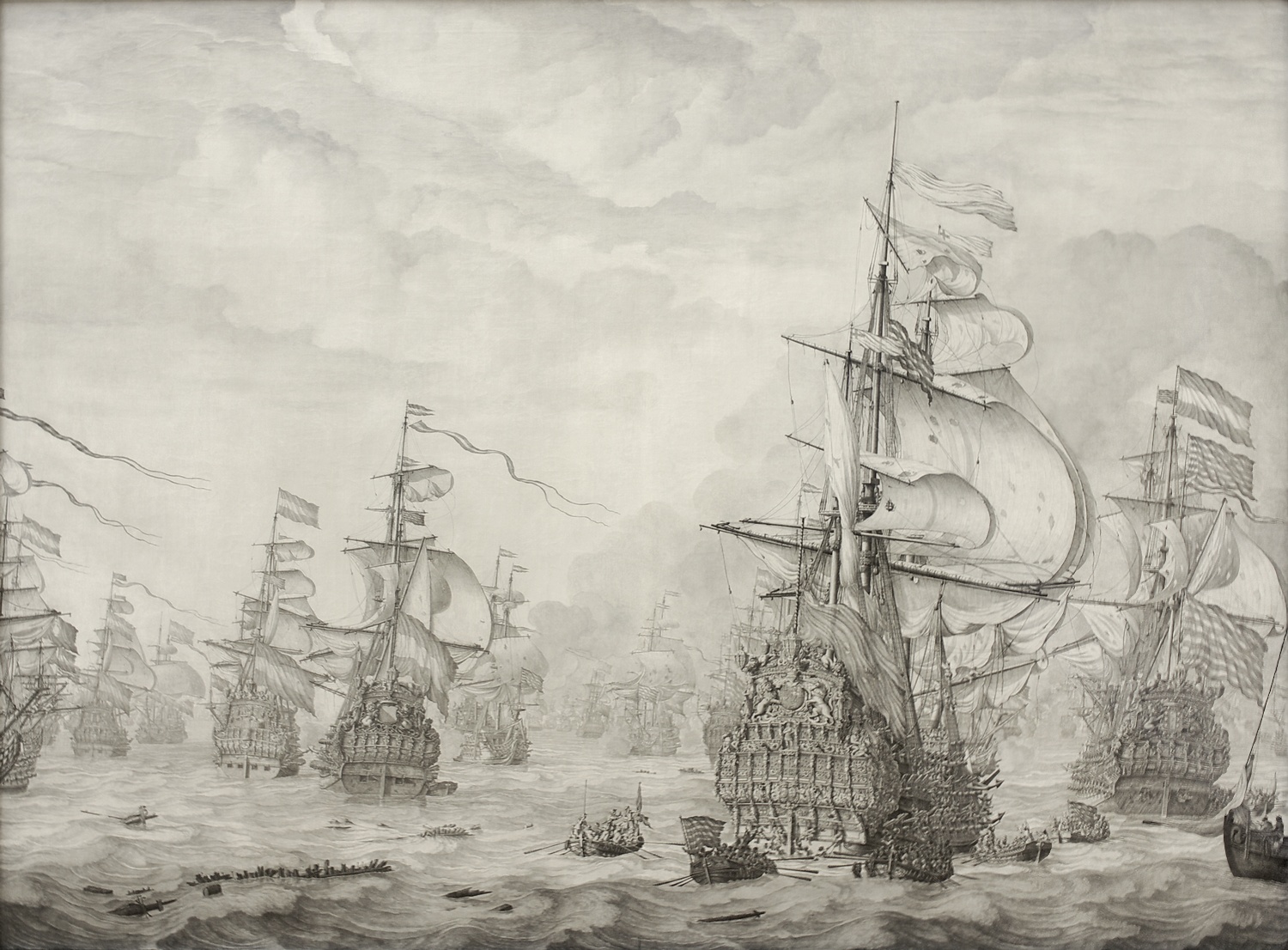
Of the fifteen or twenty maritime artists producing pen paintings in the late 17th and early 18th centuries Adriaen Salm’s technique comes closest to Van de Velde’s. Like Van de Velde, Salm applied lines and hatches over washed areas. Unlike Van de Velde, Salm’s work is distinguished by scores or scratches made in the ink and washes, not to correct errors but to achieve a particular effect and enliven the image. For example, after painting the whales black with pen and brush, he scratched the surface with a hard, fine-tipped object to expose the contrasting color underneath. If you look closely at the image below, you can see examples of scored areas that Salm has added to help define the shape of the whale’s tail and the shape of the ice.
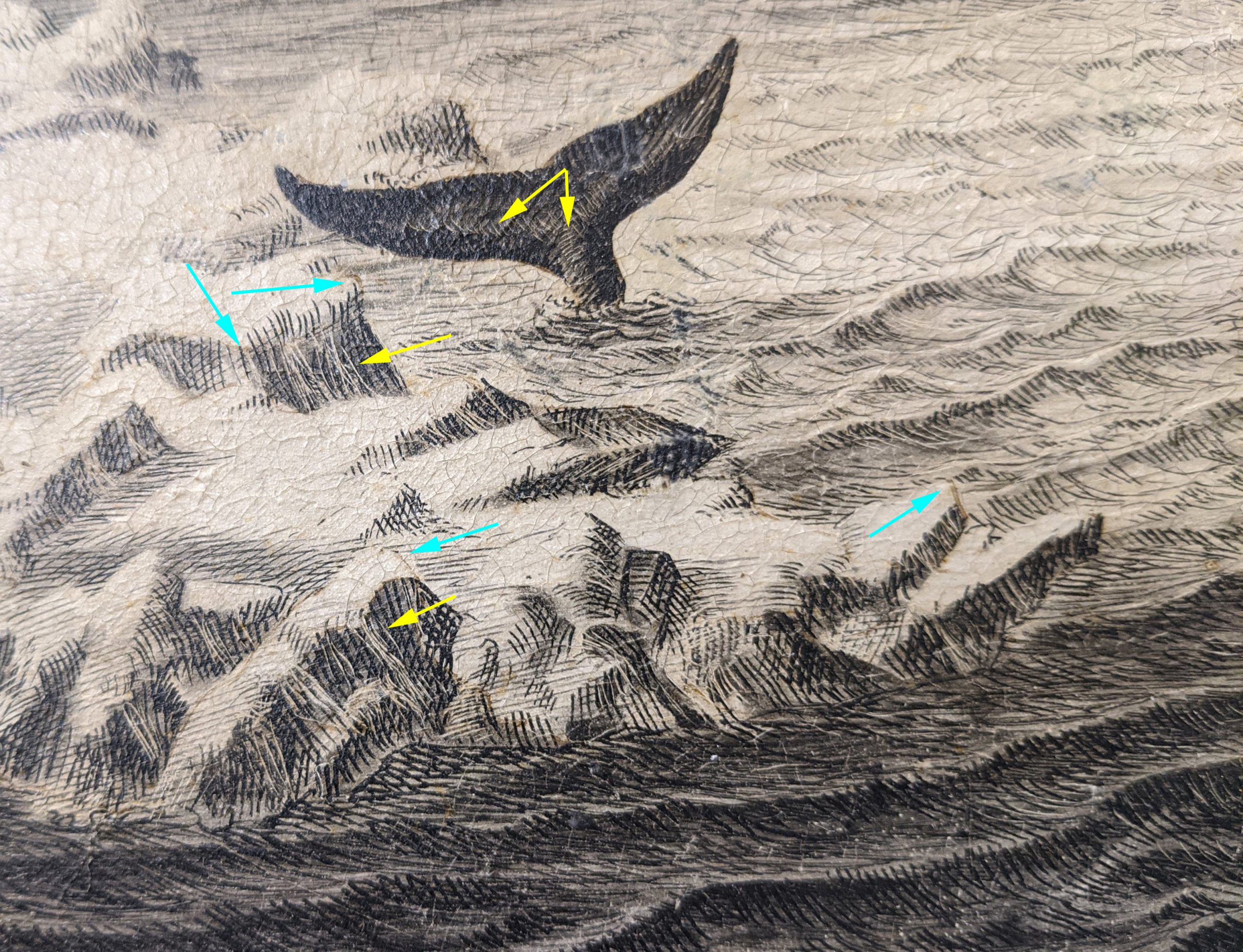
Salm produced a number of penschilderij during his life and while his technique was close to Van de Velde’s his favorite motif was not: most of Salm’s artworks depict Dutch whaling in the Arctic waters around Greenland. During the years that Salm was a practicing artist the Dutch whaling industry was at its peak and his home town of Delfshaven was a major port used by Greenland whalers so it seems logical that with a ready market of possible commissions at hand arctic whaling became his subject of choice.
Since Salm wasn’t as skilled as Van de Velde his pen paintings didn’t command the same prices, but that doesn’t mean his works weren’t sought after. Salm was one of just a few maritime artists who managed to find a market for his art outside of the Netherlands. Despite this success Salm still had to supplement his income to support his large family (he had nine kids!). Throughout his life he worked as a school teacher, calligrapher (which may be the skill that got him into pen painting) and finally as a textile merchant.
Like Van de Velde, Salm made sure that at least a few ships in each painting were identifiable (probably because the works were commissions by the captains or owners of the identified vessels). If you read my last blog post you can probably guess exactly how he did this–by making sure the decorated taffrails of the whaling ships (bootschips) were clear. Like Dutch warships, the decorative taffrails provided the identification of the ship. Sadly, only one of the bootschips in our painting is readily identifiable, but you know what? One is better than none!

In this beautiful little scene Dutch bootschips are whaling amid the drifting pack ice. The taffrail of the bootschip in the foreground at the right is decorated with a large, spouting whale. This decoration identifies the vessel as De Vergulde Walvis. The sea around De Vergulde Walvis and the other bootschips is filled with bowhead (right) whales and shallops filled with men hunting them. The crew of the bootschip anchored against the ice at the left has obviously been successful as two whale carcasses float nearby and the crew have started flensing a third carcass against the ship’s port side. I love this painting–there is so much going on everywhere you look. Have you spotted a ship in trouble yet?
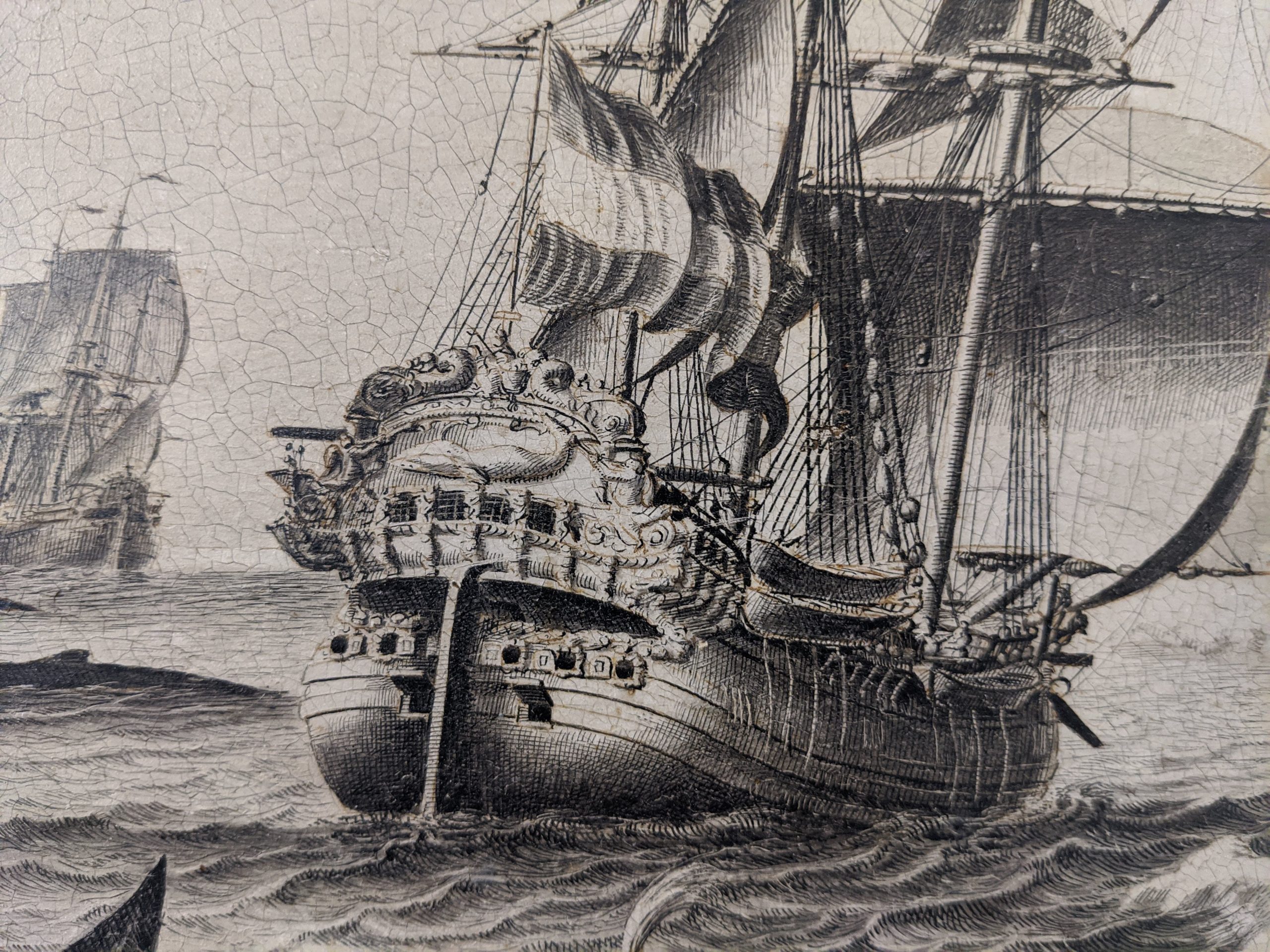
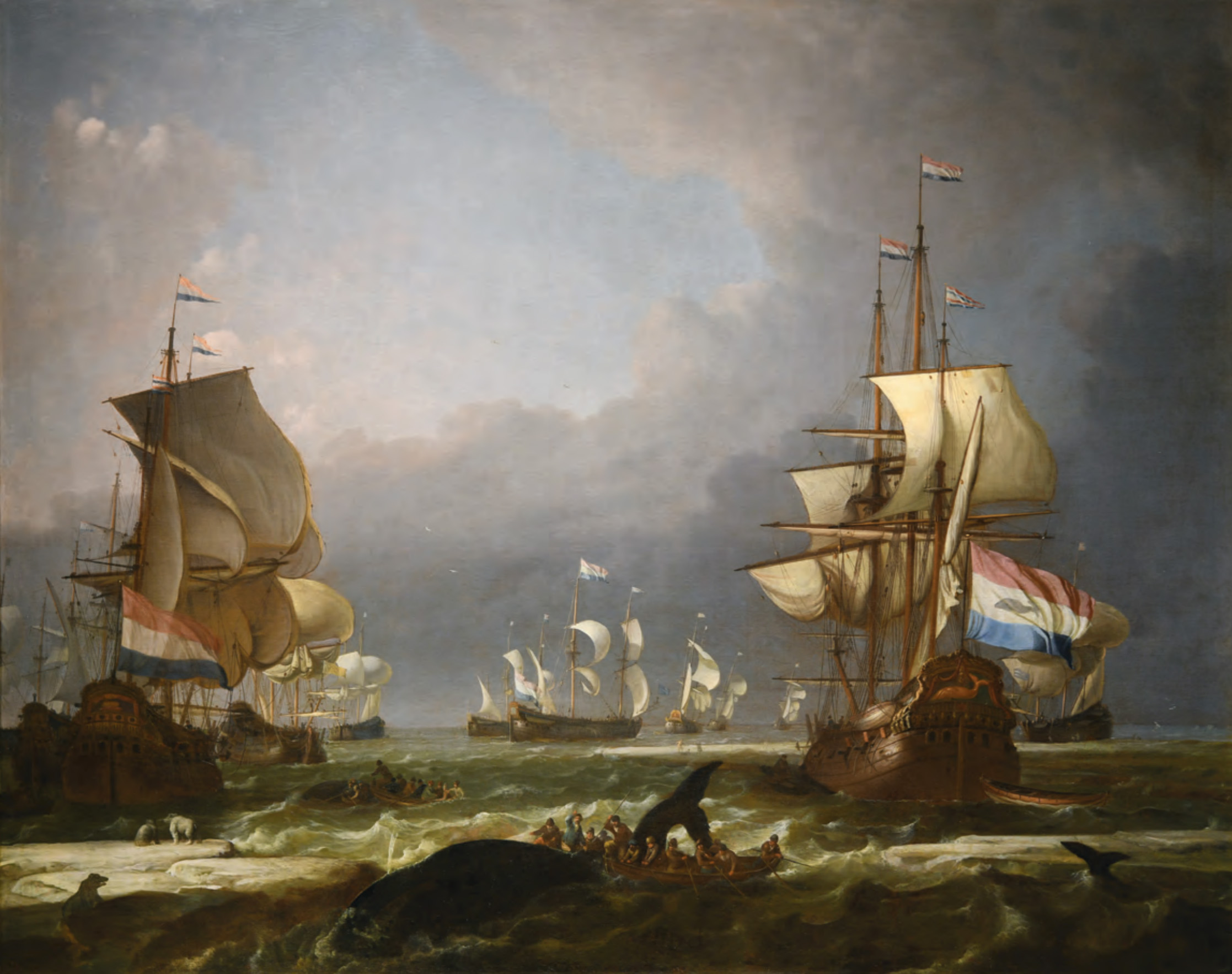
If the world ever gets back to normal and the Nederlands Scheepvaartmuseum reopens we may be able to identify another vessel. If you look carefully at the bow of the shallop in the center foreground you’ll notice the letters “I D.” These initials usually identified the master of the vessel the shallop belonged to. The Scheepvaartmuseum holds a manuscript document that identifies Dutch whaling ships and their captains. With luck this little vessel doesn’t belong to De Vergulde Walvis but one of the other ships pictured in the scene. At any rate, this certainly shows that a curator’s work is never done and there’s always something out there just waiting to reveal some new detail about the artworks in our collection.